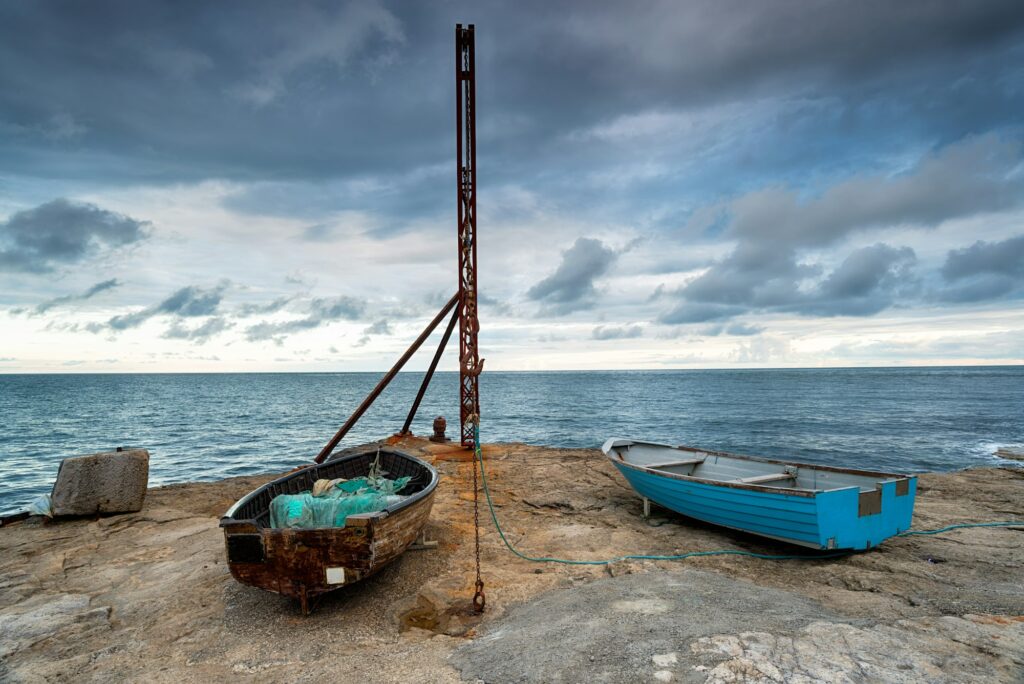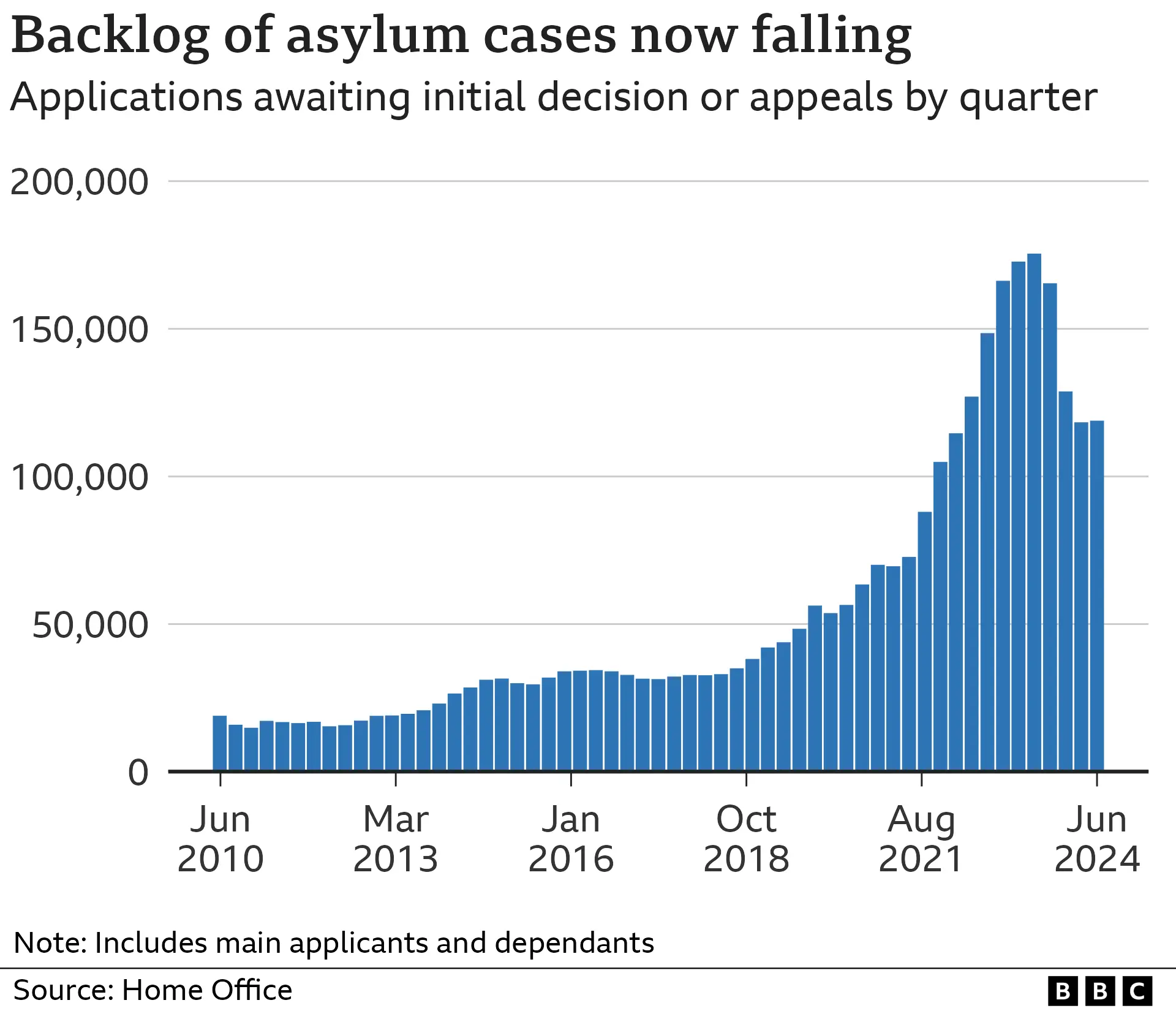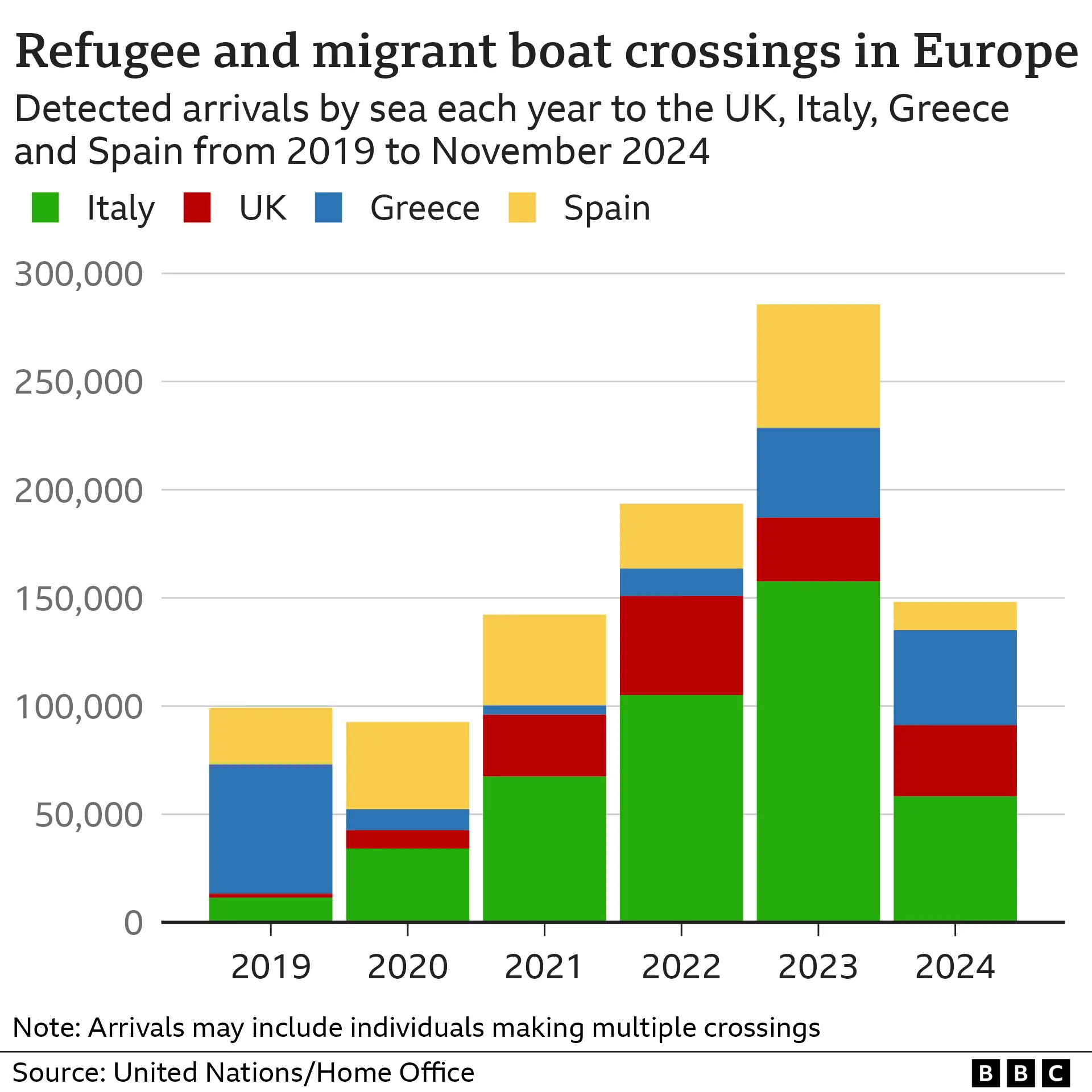Introduction
The English Channel has become a dangerous frontier for migrants seeking refuge in the UK, often risking their lives in small, overcrowded boats. Over the past few years, the number of crossings has surged dramatically, sparking debates about the UK’s immigration policies, the role of smuggling networks, and the plight of those fleeing war, persecution, and poverty. The UK government, facing mounting pressure, has adopted aggressive tactics to tackle people smugglers while attempting to streamline its asylum system. This post delves into the latest data, the risks involved, and the effectiveness of the measures being implemented.
How Many Migrants Cross the Channel?
The number of Channel crossings has risen steadily year after year. By November 2024, over 32,900 individuals had made the dangerous journey in small boats, surpassing the total of 29,437 crossings recorded in 2023. The numbers are part of a growing trend, with a record 45,755 crossings documented in 2022. Since 2018, when tracking began, more than 147,000 people have attempted to reach the UK via the Channel.
This persistent increase highlights a larger crisis in global migration. Many individuals view the hazardous Channel route as their only viable option due to restrictive immigration policies and limited legal pathways. Despite efforts by border patrols, the crossings continue unabated, placing immense pressure on UK resources and systems.
Tackling People Smugglers
The UK government has made disrupting people-smuggling networks a cornerstone of its response to the Channel crisis. Newly established Border Security Command (BSC) units have been given counter-terrorism powers to identify and dismantle these criminal organizations. These powers include the ability to freeze bank accounts and trace financial transactions linked to human trafficking operations.
Recently, in a high-profile case, a key supplier of boats and engines used in Channel crossings was arrested in Amsterdam. UK Prime Minister Keir Starmer described the arrest as a critical step in tackling illegal migration. However, critics argue that focusing solely on smugglers fails to address the root causes driving people to flee their countries.
The Dangers of Channel Crossings
Crossing the English Channel remains one of the most perilous migration routes in the world. In 2024 alone, over 50 people have died attempting to cross, the highest number recorded in a single year since tracking began in 2014. Since 2018, at least 214 migrants have lost their lives on this route, with 107 confirmed drownings.
One of the deadliest incidents occurred in November 2021, when a sinking dinghy claimed the lives of 27 migrants. Beyond the risks of drowning, other dangers include hypothermia, dehydration, and accidents during the journey to crossing points. Despite these risks, many migrants are willing to gamble their lives for the chance of safety and a better future.
Demographics and Nationalities
The majority of those crossing the Channel in 2024 come from Afghanistan, Iran, and Eritrea, reflecting broader geopolitical crises. Migrants from Vietnam and Turkey also represent significant portions of the total. More than 80% of Channel crossers are male, with roughly 40% falling into the 25-39 age bracket.
These statistics reveal the profound impact of conflict, persecution, and economic instability in the countries of origin. For example, Afghans fleeing Taliban rule and ongoing violence form one of the largest groups, often risking everything to escape dire conditions at home.
Number of Applications
The UK received 97,000 asylum applications in 2024, approaching the 2002 peak of 103,000. The rise in applications reflects global instability, with significant numbers of asylum seekers originating from Afghanistan, Iran, Pakistan, and Vietnam. Notably, Ukrainian refugees arriving under special visa schemes are not included in these statistics.
Despite this influx, the asylum system continues to face major backlogs. As of mid-2024, nearly 85,839 cases involving 118,882 individuals remained unresolved. While the government has pledged to accelerate the process, progress has been slow, and thousands of cases remain in limbo.
Deportations and Global Context
In 2024, the UK deported 7,190 people who were denied asylum, marking a 48% increase from the previous year. This rise was driven primarily by returns to Albania, reflecting bilateral agreements aimed at expediting deportations. However, only 3% of the 147,000 people who crossed the Channel since 2018 have been deported.
On a broader scale, the UK ranks fifth in Europe for asylum applications. Germany leads with 329,000 applications in 2023, followed by Spain (160,500), France (145,000), and Italy (130,500). Despite its smaller share, the UK granted asylum to 67% of applicants in 2023, compared to Germany’s 62% and France’s 31%.
Conclusion
The English Channel migration crisis underscores the complex challenges of global displacement and national immigration policies. While the UK has intensified efforts to disrupt smuggling networks and manage asylum claims, the sheer scale of crossings highlights the need for international collaboration and comprehensive solutions. Until the root causes of migration—conflict, poverty, and persecution—are addressed, the dangerous crossings are unlikely to abate.














